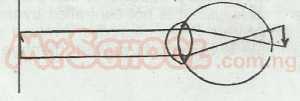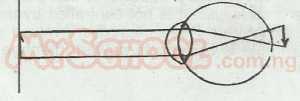Year :
1993
Title :
Biology
Exam :
WASSCE/WAEC MAY/JUNE
Paper 1 | Objectives
11 - 20 of 58 Questions
| # | Question | Ans |
|---|---|---|
| 11. |
Which of the following blood vessels carries oxygenated blood into the heart? A. Pulmonary vein B. Anterior vena cava C. Pulmonary artery D. Aorta E. Posterior vena cava |
A |
| 12. |
The conditions that ensure successful exchange of gases in multicellular organisms include the following except A. concentration gradient across the respiratory surface B. concentration gradient across the respiratory surface B C. last transportation of absorbed gases D. presence of large surface area of the respiratory organ E. presence of small, dry surface area of the respiratory organ |
E |
| 13. |
The respiratory organ found in the cockroach is the A. air sac B. trachea C. lung book D. lung E. gill |
B |
| 14. |
Which of the following structures functions as an excretory, system found in flatworm? A. Contractile vacuole B. Nephridium C. Flame cell D. Malplghlan tubule E. Kidney |
C |
| 15. |
Which of the following organs is associated with deamination of proteins? A. Lung B. Stomach C. Kidney D. Liver E. Heart |
D |
| 16. |
Ultrafiltration in the kidney takes place in the A. loop of Henle B. renal vein C. Bowman’s capsule D. pelvis E. pyramid |
C |
| 17. |
When an axon is at rest, the concentration of ions on either side of the membrane are different. Which of the following is correct about the concentrations ions on either side of the membrane? A. There is an excess of potassium ions inside the axon and an excess of sodium ions outside B. The inside of the axon becomes positively charged while the outside is negatively charged C. There is an excess of sodium ions on the inner side of the axon D. Chloride and potassium ions begin to move across the membrane E. Calcium ions accumulate on the inner side of the axon |
A |
| 18. |
The groups of sensory cells found on the upper surface of the tongue are called A. ampullae B. taste bud C. nerve cells D. somatic cells E. tactile cells |
B |
| 19. |
 Which type of eye defect IS illustrated in the diagram above? A. Hypermetropia B. myopia C. Cataract D. Astigmatism E. Glaucoma |
A |
| 20. |
 This defect can be corrected by the use of A. convex lens B. concave lens C. cylindrical lens D. surgical operation E. biconcave lens |
A |
| 11. |
Which of the following blood vessels carries oxygenated blood into the heart? A. Pulmonary vein B. Anterior vena cava C. Pulmonary artery D. Aorta E. Posterior vena cava |
A |
| 12. |
The conditions that ensure successful exchange of gases in multicellular organisms include the following except A. concentration gradient across the respiratory surface B. concentration gradient across the respiratory surface B C. last transportation of absorbed gases D. presence of large surface area of the respiratory organ E. presence of small, dry surface area of the respiratory organ |
E |
| 13. |
The respiratory organ found in the cockroach is the A. air sac B. trachea C. lung book D. lung E. gill |
B |
| 14. |
Which of the following structures functions as an excretory, system found in flatworm? A. Contractile vacuole B. Nephridium C. Flame cell D. Malplghlan tubule E. Kidney |
C |
| 15. |
Which of the following organs is associated with deamination of proteins? A. Lung B. Stomach C. Kidney D. Liver E. Heart |
D |
| 16. |
Ultrafiltration in the kidney takes place in the A. loop of Henle B. renal vein C. Bowman’s capsule D. pelvis E. pyramid |
C |
| 17. |
When an axon is at rest, the concentration of ions on either side of the membrane are different. Which of the following is correct about the concentrations ions on either side of the membrane? A. There is an excess of potassium ions inside the axon and an excess of sodium ions outside B. The inside of the axon becomes positively charged while the outside is negatively charged C. There is an excess of sodium ions on the inner side of the axon D. Chloride and potassium ions begin to move across the membrane E. Calcium ions accumulate on the inner side of the axon |
A |
| 18. |
The groups of sensory cells found on the upper surface of the tongue are called A. ampullae B. taste bud C. nerve cells D. somatic cells E. tactile cells |
B |
| 19. |
 Which type of eye defect IS illustrated in the diagram above? A. Hypermetropia B. myopia C. Cataract D. Astigmatism E. Glaucoma |
A |
| 20. |
 This defect can be corrected by the use of A. convex lens B. concave lens C. cylindrical lens D. surgical operation E. biconcave lens |
A |